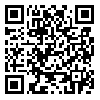BibTeX | RIS | EndNote | Medlars | ProCite | Reference Manager | RefWorks
Send citation to:
URL: http://jdisabilstud.org/article-1-726-en.html
2- Bahonar University of Kerman
Abstract
Objective: The main goal of the present study was to compare the effects of Davis method with an eclectic combination of Davis and Sina methods on reading fluency and comprehension of Iranian female dyslexic students. Dyslexic children may know many words and some of them easily use them in conversation, but they are unable to identify and understand them in writing or print. Some even can read the words but cannot understand their meanings. There are several methods for training and rehabilitation of children with special learning disorders. Davis method, the latest and the most comprehensive one, is a multi-sensory method which is used to treat people with dyslexia in the form of a combinational approach. On the other hand, Sina is a means to teach reading and spelling, using multi-sensory Fernald approach. The main purpose of this device is to teach reading, spelling, and finally writing to children who have learning difficulties.
Methods: This is a two-group pretest-posttest quasi-experimental research. The population of the study was all dyslexic students in grades two and three in elementary schools in district one in Kerman-Iran in 2015-2016 school year. Convenience sampling was used to recruit 30 participants. After the administration of Wechsler Intelligence Scale for Children (Wechsler, 1974) and Reading and Dyslexia Test (Korminori and Moradi), the participants were assigned to the experimental group and control groups in equal numbers. Group one received training in Davis method, while group two was instructed through an eclectic combination of Davis and Sinai methods. After the intervention, the Reading and Dyslexia tests were administered to both groups. The research instruments were Karami Nuri and Moradi reading and dyslexia test and the fourth edition of the Wechsler intelligence scale.
Results: Varianve-covariance analysis revealed a statistically significant difference in reading test obtained in posttest in favor of the students who had received trading through eclectic combination of Davis and Sina methods (p<0.001).
Conclusion: Although Davis method opened the way to serous treatment of dyslexia among children, it is now high time to consider other alternatives.
| Rights and permissions | |
 |
This work is licensed under a Creative Commons Attribution-NonCommercial 4.0 International License. |




